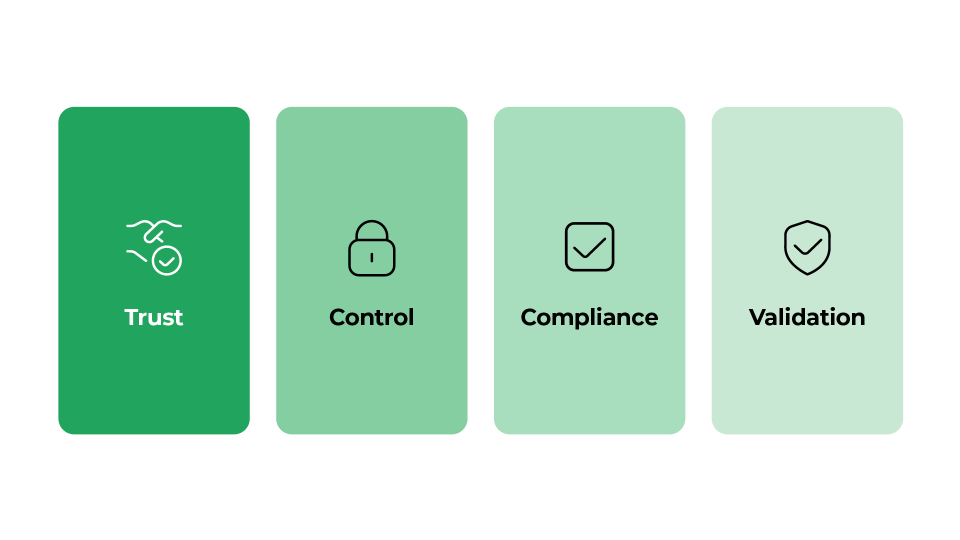Most AI projects never go past the pilot stage. A recent survey by McKinsey & Company revealed that only 15% of companies have successfully implemented AI solutions at scale. The reason behind the low success rate in implementing AI solutions is neither technological nor related to talent acquisition. Rather, it’s more fundamental: their data foundation simply isn’t ready for AI deployment.
No AI project succeeds without solid data. Many business leaders, in their urgency to explore AI, end up overlooking their data condition. The result is enthusiasm without outcomes. To turn AI into a reliable business tool, organizations must first strengthen their data.
This blog discusses the challenges in AI readiness, spotlighting the critical role data plays and how you can overcome the obstacles with the right strategy and partnerships.
Why Data Comes Before AI
AI is as good as the data used for training it. Excitement around generative AI often hides a key fact. Data in its current state may not be ready to power trustworthy results. Leaders must understand that AI does not transform poor data into insights. Instead, it amplifies both strengths and weaknesses in the data. That is why organizations must bring their data to a level where results are predictable and verifiable.
However, a fundamental question remains: How do organizations overcome this challenge?
Gruve scales AI-enabled teams and workflows with trusted data foundations, secure AI platforms, and infrastructure. These teams and workflows equip enterprises with scalable AI use cases and hybrid workforce to deliver measurable business outcomes.
Building the Right Data Foundation
The core of AI readiness is a rock-solid data foundation. Without it, results will be inaccurate and misleading. Conversely, an effective and efficient data foundation can help achieve:
- Predictable results: Data must reach a level where outcomes can be trusted. Predictability gives leaders confidence that the insights generated will support their decisions.
- Reduced hallucinations: When data is inconsistent or incomplete, AI models may invent results. AI hallucinations erode trust quickly. Clean, curated data reduces these risks.
- Accuracy: AI must deliver accuracy at scale. Accuracy is only possible if the underlying data has been prepared carefully and maintained over time.
Understanding the AI Maturity Curve
Not all organizations are at the same level. Some are dabblers, experimenting without structure, while others are committed leaders, investing strategically.
Dabblers Vs. Committed leaders
Dabblers test AI without dedicated budgets or clear goals. They may achieve small wins, but progress remains slow. Committed leaders, in contrast, take systematic steps. They invest in talent, tools, and governance. They also measure progress with defined metrics.
The importance of structure
AI adoption requires order. A structured approach ensures organizations move beyond experimentation into sustained impact. The maturity curve shows that those who plan systematically reach scale faster and with greater returns.
From Pilots to Scaled Projects
Successful AI pilots reveal both opportunities and infrastructure gaps. Organizations typically recognize AI’s potential through initial projects but simultaneously discover their data foundations need significant strengthening before scaling these initiatives.
At Gruve, an AI-ready data foundation means meeting four crucial parameters:
- Trust: AI systems can only deliver reliable outcomes if the data is accurate, complete, and relevant. Trust in data ensures confidence in decisions when moving from pilots to scaled projects.
- Control: Strong governance defines who can access data and how it is used. Secure control prevents misuse and supports responsible scaling of AI initiatives.
- Compliance: Compliance ensures that AI systems operate within regulatory, ethical, and organizational boundaries. It safeguards organizations from legal risks while building credibility with stakeholders.
- Validation: Validation confirms that data is sourced correctly, remains consistent, and passes continuous quality checks. This process guarantees that AI models stay dependable as they scale.
Meeting these parameters is indispensable to a robust and risk-proof AI-ready data foundation. Gruve brings deep expertise in AI-native data engineering, data science, data governance, and vertical domains, building a strong data foundation that meets the four crucial parameters to reliably and continually enable any enterprise-grade AI use cases.
Partnering with Experts for Acceleration
AI adoption is not a solo effort. Working with experts accelerates progress. Gruve has deep expertise and experience in laying the data foundation, designing pilots, and guiding change management. It helps build AI-enabled Teams to take on tedious tasks across core business functions like marketing, sales, accounting, HR, security, engineering, and operations. It creates workflows and hybrid team structures where human expertise and AI complement each other to deliver real outcomes. Furthermore, it brings deep expertise in enterprise AI-native use cases and vertical domains that are seamlessly tailored to specific industry needs.
Partnering with experts is crucial as it brings an outside perspective that helps leadership teams define vision and measurable outcomes. By collaborating, organizations avoid costly mistakes and move toward scaled adoption.
Conclusion
AI is a game-changer and holds immense promise. However, there is a caveat. It is a game-changer only for those who prepare. The key lies in building a data foundation that enables accuracy, predictability, and trust. Leaders who invest strategically, measure outcomes, and partner with experts will see AI deliver real results. Those who dabble will remain stuck in pilots. The choice is clear. The future of AI belongs to those who act with vision and discipline today.
Unsure of where to begin? Contact us now for a personalized assessment of your organization’s AI readiness.






